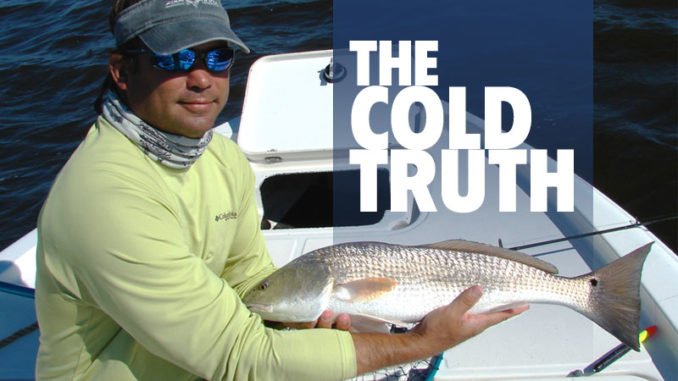
Try these veteran winter saltwater fishing tricks
Pointing up a small channel to the light ripples in a patch of busy water, Mike Eady of Yak Fishing and Outdoor Guides cautioned the fishermen in his party to move slowly and carefully until they were in casting range of the disturbance. Eady said redfish were most likely the target. The fish appeared a bit sluggish in the cold, January water. But they were on high alert in the shallows and would spook easily.
“Our winter saltwater fishing is a bit of a challenge, especially for reds in the shallow creeks,” Eady said. “You have to get within casting range without spooking them and then cast something they want to eat. We use a lot of natural baits to get some scent in the water. But we use lures at times, too. With natural baits, you can let them sit and rely on the scent to draw strikes. But you have to move lures, and the colder the water, the slower you have to fish them.”
Eady and his partners, Johnny Wigfall and Mike Kachman, (www.yakoutdoorguides.com) offer kayak, boat and kayak mothership fishing. They concentrate on the waters of Murrells Inlet, S.C., all year, but especially once the water cools. It’s a unique body of water. It has no inland streams feeding it. A few small, rainwater drains feed it. But the ocean is Murrells Inlet’s main water sources.
This gives fishermen some diverse water to fish in a small area. It begins with the jetties at the inlet, some sandy bottom near them, and then oyster beds and mud bottoms deeper in the estuary. The water begins at ocean temperature and may warm a handful of degrees in the headwaters of the creeks. That’s especially true with a mid-day low tide on a sunny day.
Scent trails attract fish
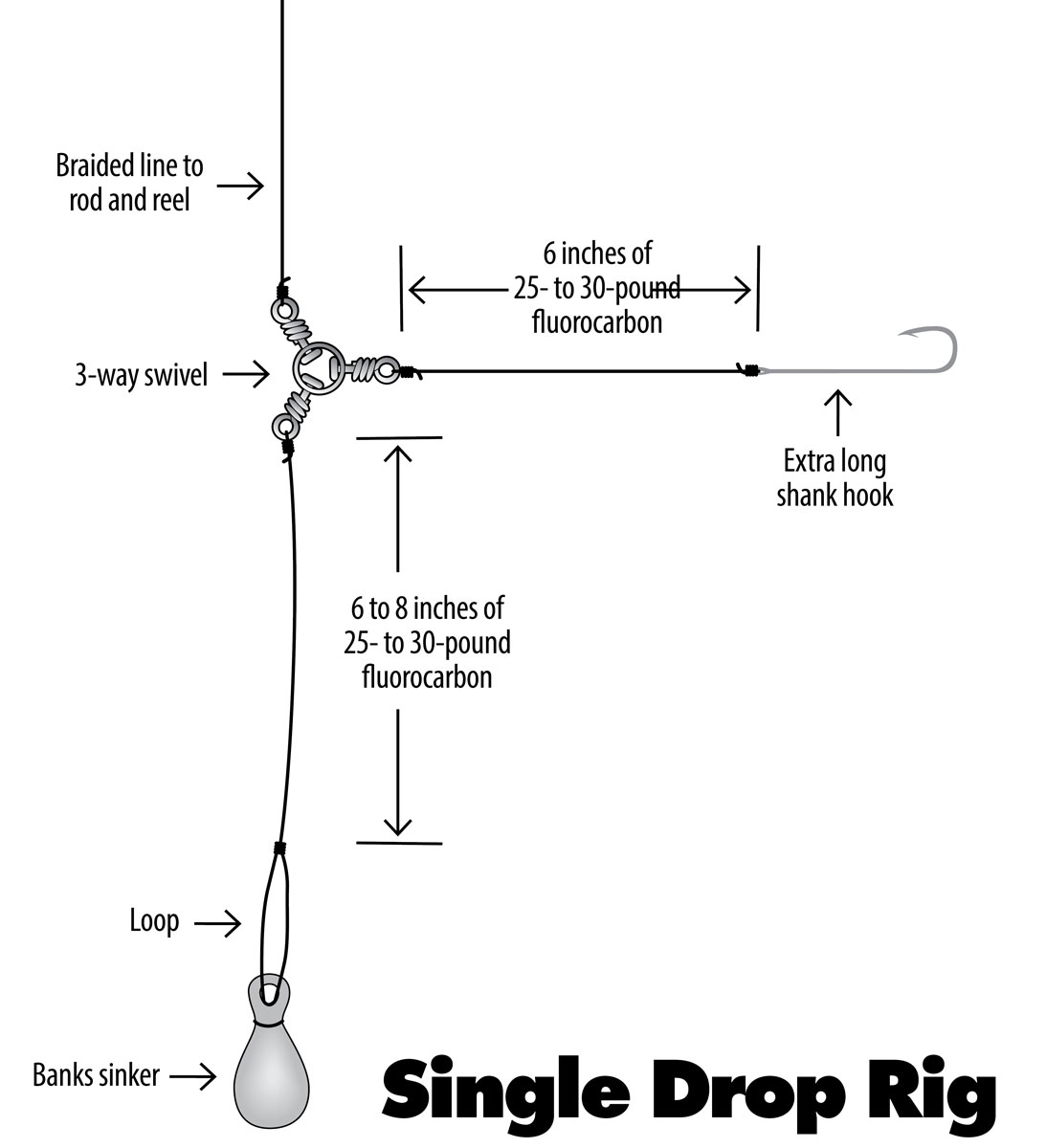 “During the winter, we target red drum, speckled trout and black drum,” Eady said. “We also occasionally catch some flounder, weakfish (gray trout) and tautog. Our main natural baits are whole shrimp, pieces of shrimp, pieces of cut bait and pieces of mullet minnows and menhaden. These baits have natural oils that spread their scent through the water with the tide or current. And it often gets fish’s attention and leads them to the bait.
“During the winter, we target red drum, speckled trout and black drum,” Eady said. “We also occasionally catch some flounder, weakfish (gray trout) and tautog. Our main natural baits are whole shrimp, pieces of shrimp, pieces of cut bait and pieces of mullet minnows and menhaden. These baits have natural oils that spread their scent through the water with the tide or current. And it often gets fish’s attention and leads them to the bait.
“We fish these baits on a combination of Carolina rigs and single-drop rigs. Our rigs are made of 25- to 30-pound fluorocarbon to help disappear in the clearer, winter water. And the slightly stronger line helps pull fish out of holes in the jetties and off the oyster rocks. The biggest difference with our Carolina rigs is they are shorter from the swivel to the hook, maybe 6 to 8 inches. This helps prevent fish from tangling and breaking off.”
Eady makes his single-drop rigs of 25- to 30-pound fluorocarbon with a 3-way swivel. The bottom leg drops 6 to 8 inches to a loop where a bank sinker is attached. This sinker doesn’t hang up badly and holds pretty well with only a couple of ounces. Much like the Carolina rig, the drop from the middle eye to the extra long-shank hook is only about 6 inches. The shorter leader holds the bait just off the bottom and helps prevent hang-ups. The difference isn’t much. But Eady said on some days and locations, this rig gets strikes while the Carolina rig doesn’t.
Nearshore reefs are a good starting point
Eady said the winter saltwater fishing action sometimes begins in the ocean, with black drum and sheepshead on the nearshore artificial reefs. They like live fiddler crabs, which are scarce but available on warm sunny days. When fiddler crabs aren’t available, he uses frozen sand fleas, aka mole crabs, and pieces of shrimp. Black drum will eat pieces of frozen mullet, and sheepshead sometimes will. Occasionally, some weakfish feed with the drum and sheepshead.
The next place is along the jetties, where Eady catches red drum, black drum, speckled trout, gray trout, occasionally some flounder and even a few tautog. He said crab is an ideal bait for tautog and drum but is rarely available. He uses pieces of shrimp fished on the single-drop rigs close to the jetties. The short leaders are a plus and rarely let the tautog get into a hole.
The jetties have lots of sand bottom around, and the fish will hold on it. This is a good spot to fish natural baits. But Eady said the specks, red drum and occasionally flounder will hit soft plastics and sinking MirrOlures fished slowly along the bottom. Paddletails and Z-Man DieZel Minnows are the top soft plastics.
“Anything is subject to be different on different days. But as a rule, the trout generally prefer deeper water, often around the edges of the oyster rocks. And redfish are often very shallow and over mud bottom or on top of oyster rocks where the water is a little warmer,” Eady said. “Many times, red drum will be so shallow we see their wakes moving as they feed. They aren’t tailing, but will still let you know where they are.”
The state border-area holds good winter fish
Mark Stacy of Ocean Isle Fishing Charters fishes the north end of South Carolina’s Grand Strand from Dunn Sound up to the Shallotte River in North Carolina. In this area, the winter saltwater fishing is a little different. The Calabash and Shallotte Rivers are a little larger than the Murrells Inlet creeks. And they bring a little more cooler, inland water into the mix. These waters aren’t usually as warm as Murrells Inlet. But they are typically the warmest winter inshore waters in North Carolina.
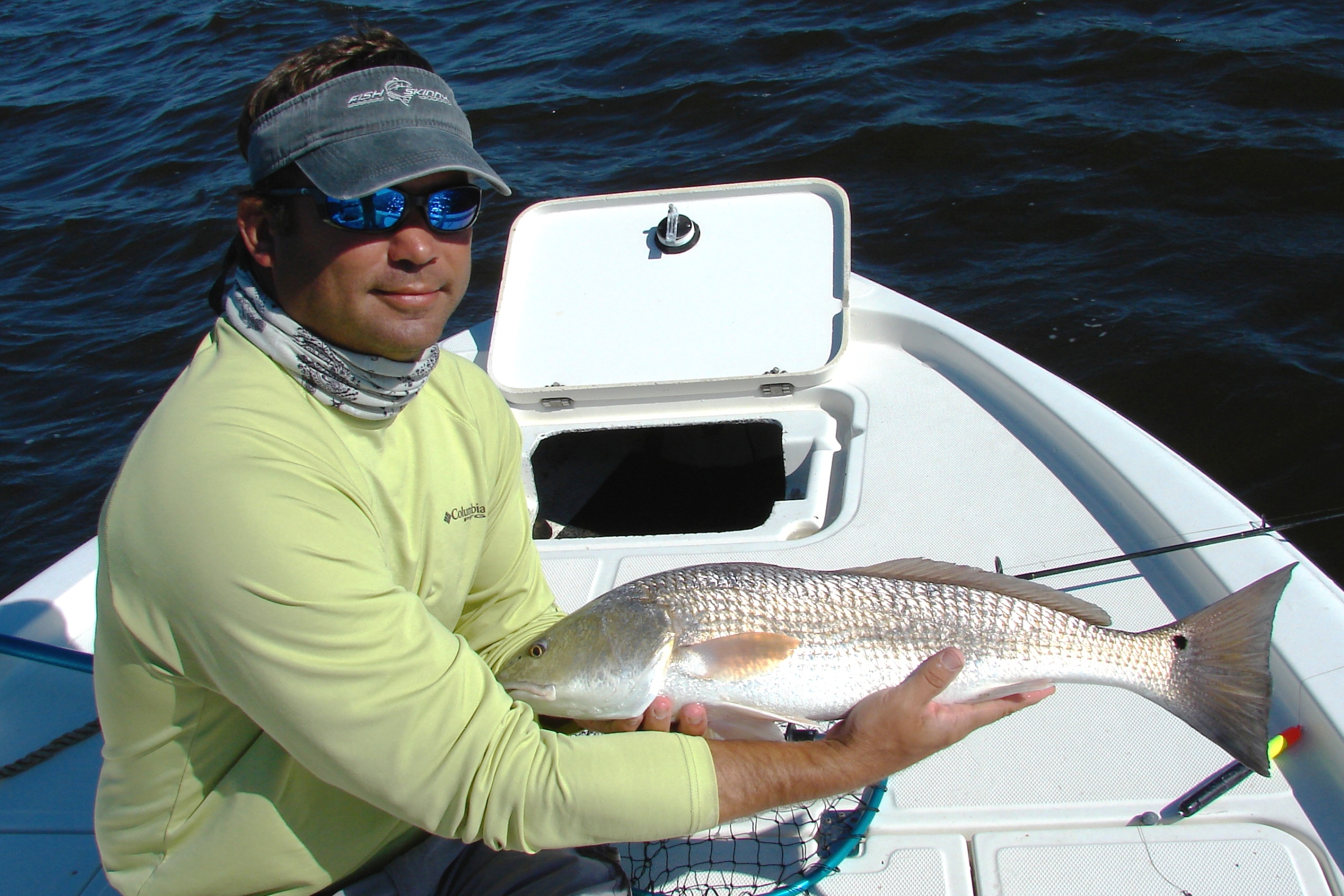
Stacy does many of the same things Eady does to catch fish. He rarely fishes the winter ocean but begins fishing at Little River, Tubbs and Shallotte inlets and fishes back into the Calabash and Shallotte Rivers. Little River Inlet has jetties, and they hold trout, both drum, and occasionally flounder. Stacy said a few tautog bite along the Little River Jetties. But fishing for them isn’t consistent, so he doesn’t target them.
“One of the unique traits of the inshore area between Little River Inlet and Shallotte Inlet is shallow ponds in the marsh,” Stacy said. “At low tide, most of them are too shallow for even the fish to stay, but once the tide begins rising, red and black drum work their way into these ponds to feed. They aren’t aggressive like in the fall, but they are actively feeding, even though they’re moving slower.”
Get shallow for skinny-water drum
Stacy specializes in catching drum in these shallows, and keeps a bare-bones flats skiff that only draws 5 inches of water to get into these areas as soon as possible on the rising tide. From years of winter saltwater fishing, he knows the primary travel paths and sets up to intercept hungry drum as they come into these ponds.
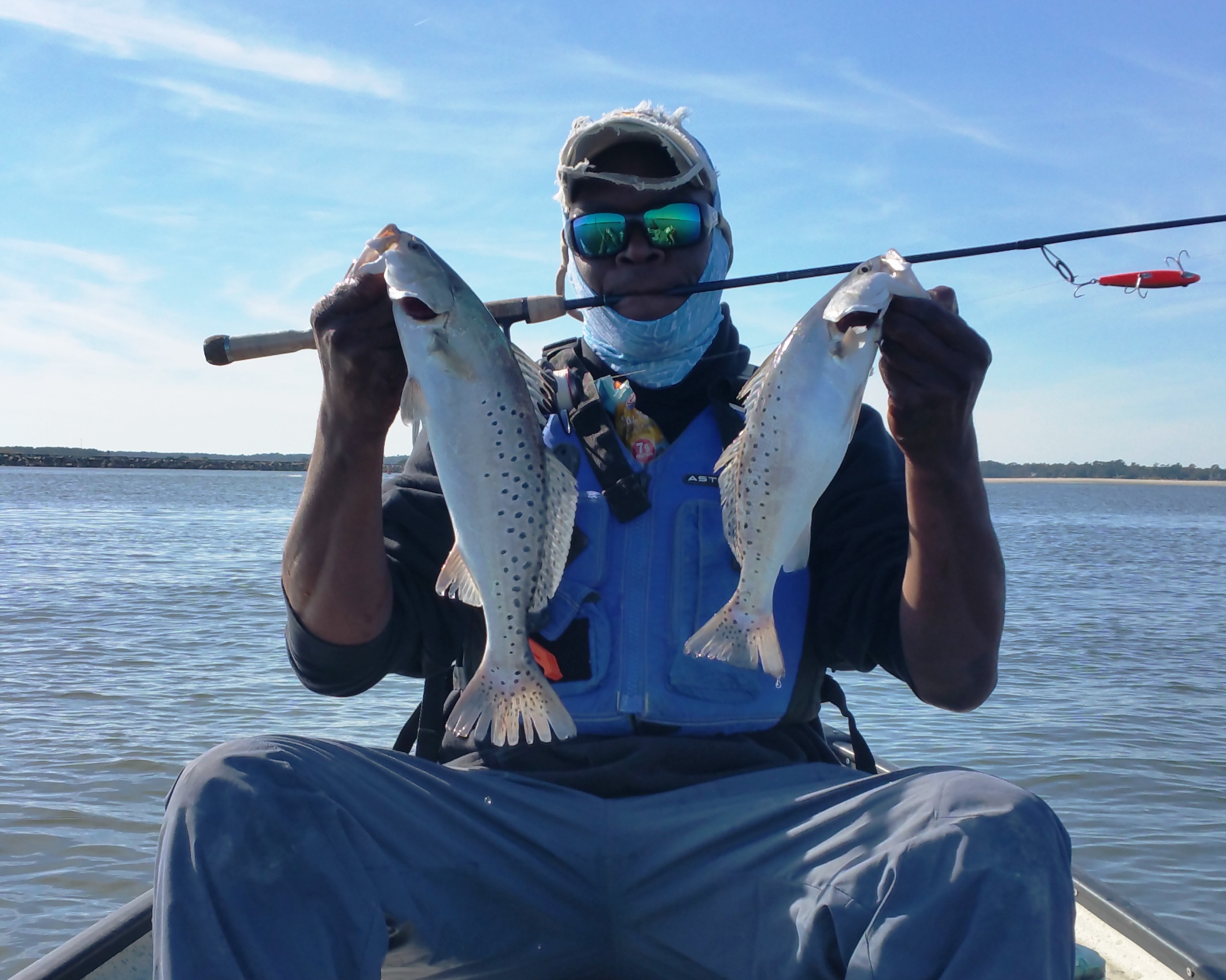
“Drum have the best noses in the marsh, and we use that to catch them,” Stacy said. “Oily baits, whose scent spreads with the wind and tide are key. Pieces of menhaden work pretty well, but there is something special about pieces of crab. The oil in crab spreads well, and it’s almost like crack for fish. If there are any drum downwind or down-current of crab baits, they’ll smell it and come looking.”
Stacy said crabs are scarce during the winter; he has to buy them at seafood markets. However, one crab will make at least eight baits, so they last pretty well. He starts with live crabs and doesn’t kill them until he is ready to use them. He begins by removing the shell, and then divides the legs and flippers, with a chunk of meat on the body end of each. Each leg or flipper makes a bait.
Knowing that some fish will break off on the sharp edges of the marsh grass and oysters, Stacy makes a very simple rig. He ties a 1- to 2-foot piece of 30-pound fluorocarbon to the end of his line and adds a wide-bend circle hook to the end, with a couple of 1/8-ounce split shot about 8 inches above the hook.

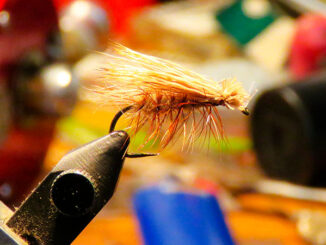



Be the first to comment